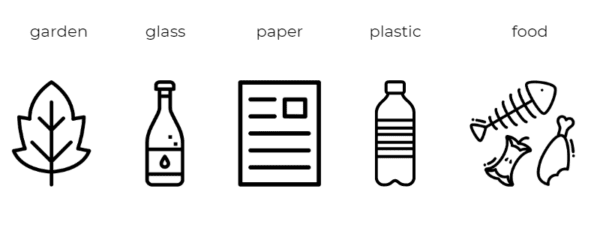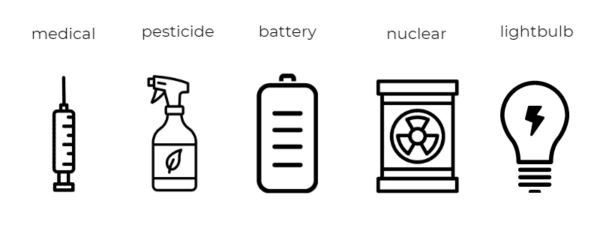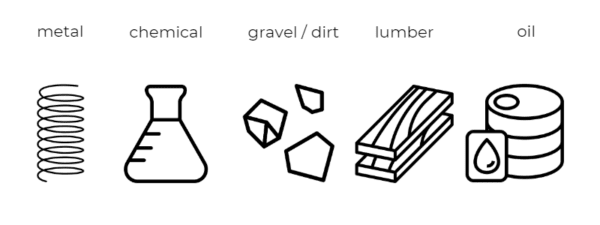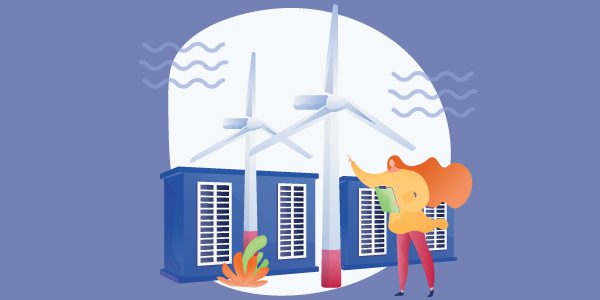Waste management is the strategising of waste disposal, which involves recycling, proper disposal plans, waste reduction, and prevention of waste. With 2.01 billion tonnes of solid waste being generated annually, with it expected to increase to 3.4 billion by 2050, the time to act is now. Certainly not a “pretty” subject by any means, but one that needs to be addressed, nonetheless.
Waste management is part of the circular economy model. As mentioned in the definition, waste management is not just about disposal (a reactive response) but also, it’s about prevention (proactive response). In the waste management hierarchy, avoiding and re-using are at the top and most desired outcome. They are followed by recycling and generating energy. Finally, the last two are treatment and disposal.
While it would be ideal to prevent creating waste in the first place, it’s not really possible for many economies. For developing countries in particular, in my view, it’s better instead to focus on the “middle” of the hierarchy, recycling and energy generation. While most people would be aware of recycling, the idea of generating energy through rubbish is less well-known; which is where energy-from-waste plants come into play. But first, what are the four main types of waste?
The Four Major Types Of Waste
There are many types of waste. However, the four main types are; municipal solid waste, hazardous waste, industrial waste, and agricultural waste.
Municipal Solid Waste
Is waste from homes, hotels, offices, shops, schools and other institutions. It’s predominantly made up of glass, metal, paper, plastic, and food waste. Predominantly, it’s made up of things we would typically throw away.

Hazardous Waste
Can include small things like batteries, to nuclear waste. Essentially, the main component of this waste is that it’s toxic to humans and the environment, and is combustible. This type of waste needs to be disposed of thoughtfully and appropriately to ensure minimal impact and damage.

Industrial Waste
Is predominantly made up of organic and inorganic materials produced from industrial projects. The material can range from concrete, to oil, to scrap metals, for example.

Agricultural Waste
Materials like manure, trees, grapevines, livestock waste, weeds, fertiliser, oil, crops, as well as other types of waste produced from agricultural operations. Due to things like fertiliser and oil, it’s essential for waste to be properly disposed of to ensure minimal impact on the environment. 998 million tonnes of agricultural waste is reportedly disposed of yearly.

Waste Disposal Mismanagement
Open dumping accounts for 31% of waste disposal. An open dump is an illegal dump site where, unlike regulated facilities, has no restrictions or management in place. These dump sites can be extremely dangerous as they are a health, safety, and environmental hazard, due to the mixing of different wastes that can be combustible and, or hazardous.
Open dumping takes up the largest percentage of waste disposal. And unfortunately, this issue threatens developing countries more than developed ones. This particular observation speaks volumes at the cost-prohibitive nature of waste disposal and emphasises the importance of implementing an effective and economical waste management plan.
Energy Generation (Waste-To-Energy Plants)
One way to utilise rubbish is through a waste-to-energy (WtE) plant. A WtE plant (or sometimes referred to as an energy from waste plant) uses the incineration of garbage to generate power. Currently, there are 2,500 WtE plants worldwide. In total, they have a capacity of around 420,000 tonnes of waste disposal every year. WtE plants are quite expensive. In Australia, two new plants being built in Queensland and Victoria are looking to cost around AU$2 billion.
Waste-to-energy plants are used for municipal solid-waste. This type of waste is made up of everyday products that we throw in our garbage. To give a more specific idea, this could be paper, cardboard, food, plastics, and wood, to name a few. There are two ways to generate energy from waste, they are incineration and gasification.
Incineration
The incineration method works by having the garbage burned, which releases heat. This heats the water in a boiler, creating a high-pressure steam. This steam then pushes the blades of the turbine generator and produces electricity.
In addition to creating energy, WtE’s create non-hazardous ash, which can be repurposed in the construction and road building industry. The incineration has the ability to reduce the volume of waste by up to 90% and reduce its weight by up to 75%, significantly minimising the material going into landfill and consequently saving space.
Gasification
This is a more environmentally-conscious method of generating energy from heating garbage. Rather than harvesting energy through direct combustion (like the incinerator method), the waste is fed into a gasifier. This gasifier employs heat and pressure to break down the wastes’ chemical bonds which form a gas (unlike steam from the incinerator method). More specifically, syngas.
Syngas (a.k.a. Synthesis gas) can be used as a green alternative to fossil fuels. Additionally, this product can be used in the development of methanol or synthetic diesel. This is a cleaner method of energy generation from burning waste. However, it’s still relatively new and not widespread. This could grow significantly in popularity due to it being cheaper and more efficient than the traditional incinerator method.
Waste-to-Energy Limitations
While waste-to-energy (WtE) plants are an excellent method for waste disposal, they do have drawbacks that would explain its slow adoption.
High Costs
As previously mentioned, WtE plants aren’t cheap, to install or to maintain. Costs come from the pre-sorting of rubbish, cleaning of syngas, and the incineration itself. Therefore, these WtE technologies are predominantly used in developed countries and not in developing countries where illegal dumping is more prevalent.
It’s also more expensive than landfill, in one instance costing US$20 per tonne more. This kind of gap soon adds up and will deter governments. Being able to minimise the price will make it a more attractive option; however, that most likely will only happen later in the future, depending on the level uptake.
Pollutants
While WtE plants are generating electricity, they are also incinerating waste, which releases harmful pollutants into the air. They release pollutants such as; mercury, dioxins, and heavy metals. However, as there are now more emission control technologies, the amount of pollution is significantly mitigated and the captured pollutants can be repurposed.
For example, the AVR plant in the Netherlands has a CO2 capture system that uses the caught pollutant to be sold back to the greenhouse horticulture sector. This method supports the circular economy and is the most ideal situation for waste energy.
Waste is a massive problem, globally. As our population increases, along with urbanisation, the need for first and foremost, less waste, and secondly, ways to utilise that waste is essential. Waste to Energy plants might be the answer as they can be integral to the waste circular economy. However, for them to be effective and less harmful to our environment, we need to have strict policies and procedures in place. WtEs could be the future, however, only time will tell if they’re sticking around.











